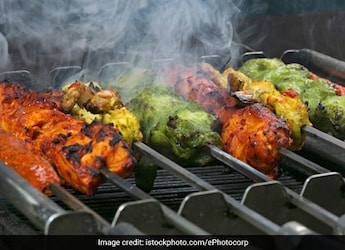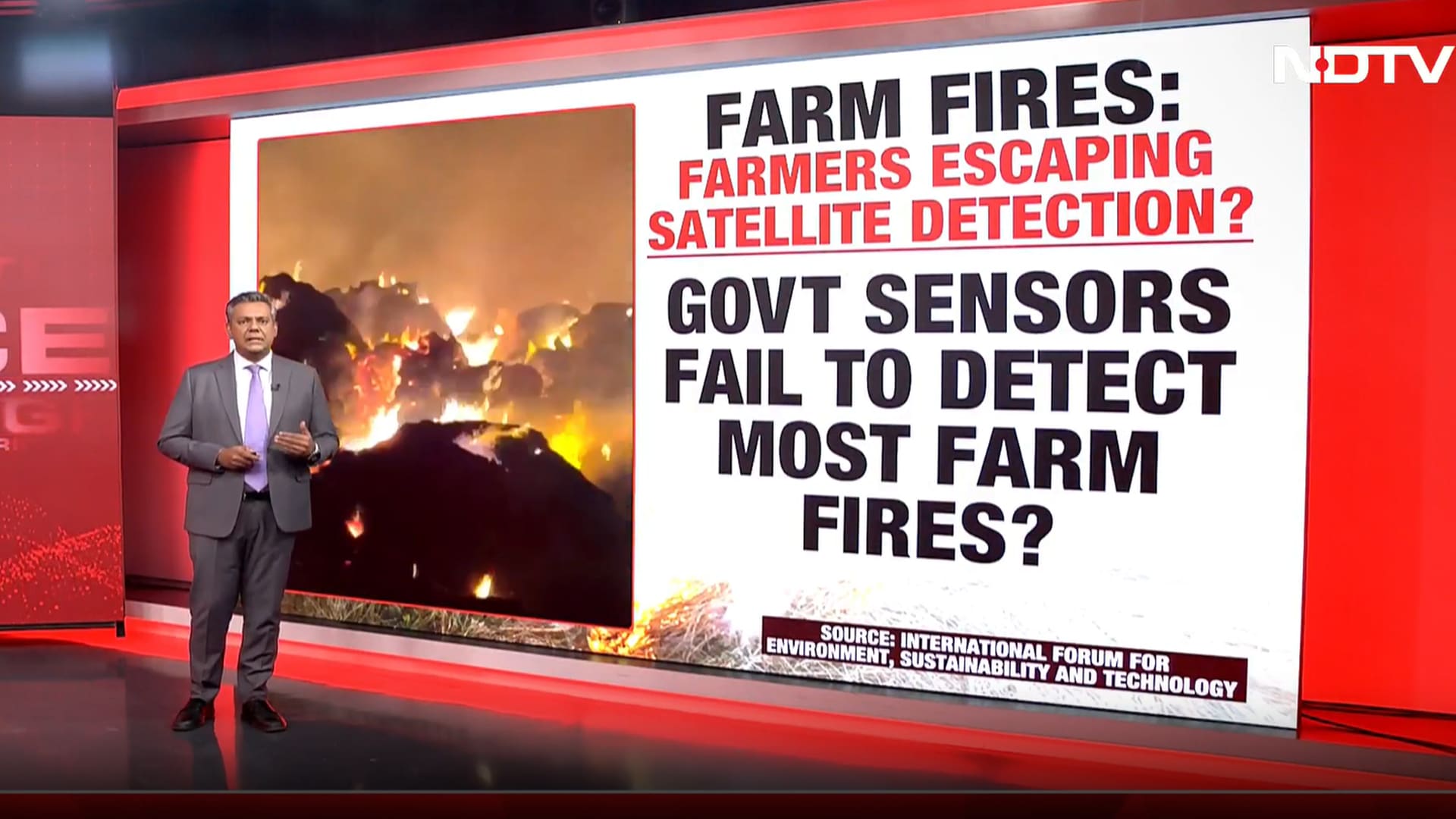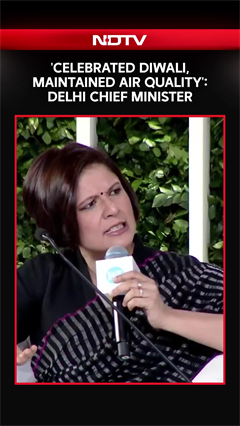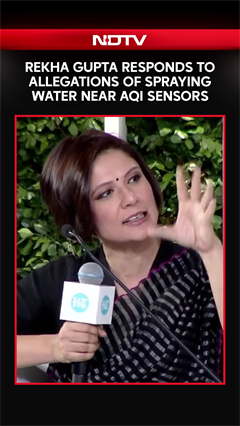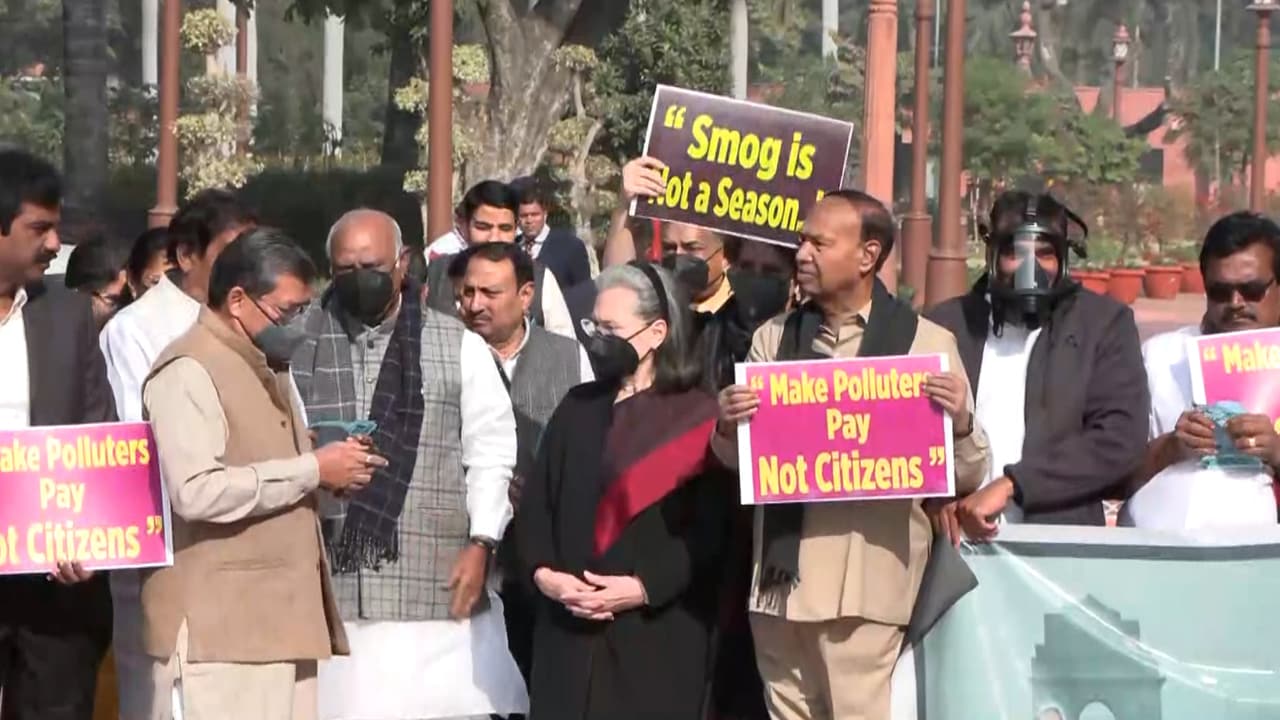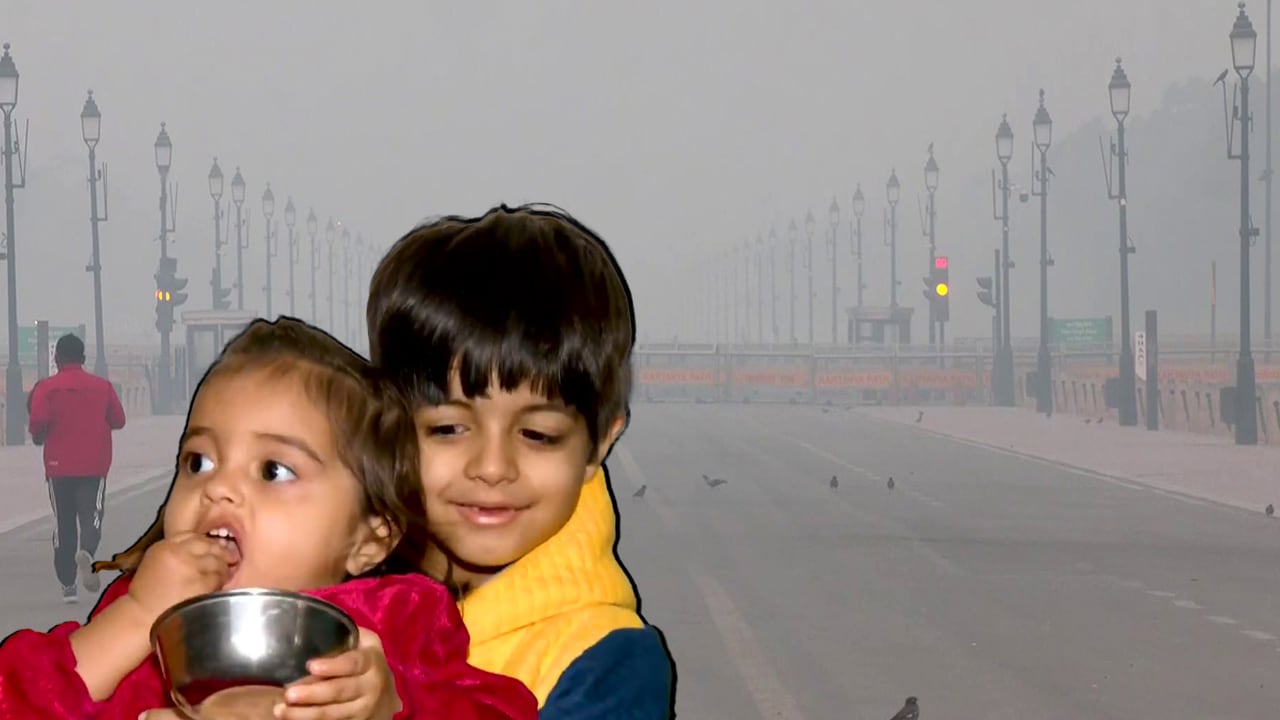- Home/
- Explained: 350 vs 1,100, CPCB vs IQAir, Who Has Got Delhi's AQI Right
Explained: 350 vs 1,100, CPCB vs IQAir, Who Has Got Delhi's AQI Right
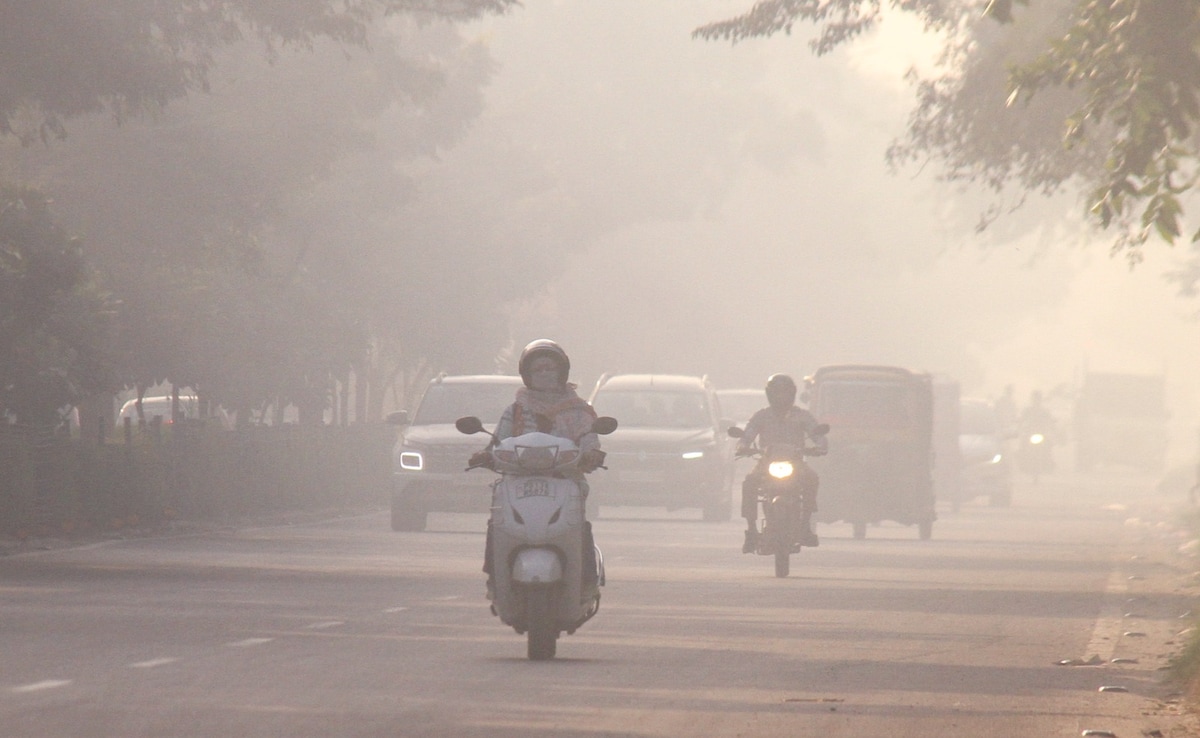
Highlights
- Delhi's AQI reached 1,121 on IQAir and 351 on CPCB, both accurate by different scales
- CPCB's AQI scale caps at 500, categorising above 401 as severe pollution levels
- IQAir uses a stricter scale, labelling AQI above 301 as hazardous for health
Delhi's sky turned grey and hazy a day after Diwali fireworks lit up the city. The air, toxic, making the national capital the "most polluted major global city". The pollution levels or the Air Quality Index (AQI) soared to severe levels, resulting in difficulty in breathing, itchy eyes and causing discomfort to even healthy people.
IQAir, a Swiss air-quality monitoring company, clocked the city's AQI at a staggering 1,121 on Tuesday. However, India's Central Pollution Control Board (CPCB) reported a much lower AQI of 351, falling under the "very poor" category. The catch is - both the readings are correct but for different reasons.
Also Read: 'Green' Crackers Failed. Delhi Suffers Worst Post-Diwali Air In 5 Years
What Is AQI?
The Air Quality Index (AQI) is a public health tool designed to communicate air pollution levels or the quality of air in simple terms. Eight pollutants namely particulate matter (PM) 10, PM2.5, Ozone (O3), Sulphur dioxide (SO2), nitrogen dioxide (NO2), carbon monoxide (CO), lead (Pb) and ammonia (NH3) act as major parameters in deriving the AQI of an area, as per the CPCB.

"AQI is a calculated index based on different parameters. It is for common man's understanding of the quality of air," explained Mohan George, Consultant at the Centre for Science and Environment. "AQI has different color-coded ranges simply to tell the citizens that air is good or satisfactory or very poor and what they should be doing," George, also former Additional Director at Delhi Pollution Control Committee, added.
For example, AQI between 401 and 500 or in the severe category is hazardous for even healthy people, and one should avoid going out or exercising in the open.
Also Read: Did Delhi's Green Diwali Work? Air Quality Data From Last Year Shows...
CPCB vs IQAir
Difference In Scale
India's AQI scale is capped at 500. Meaning, AQI beyond 500 will be grouped under the "severe" category, indicating a public health emergency.
The CPCB categorises AQI into six parts: 0-50 is considered 'good', 51-100 'satisfactory', 101-200 'moderate', 201-300 'poor', 301-400 'very poor', and between 401-500 'severe'.
IQAir on the other hand has tighter grouping: 0-50 is considered 'good', 51-100 'moderate', 101-150 'unhealthy for sensitive groups', 151-200 'unhealthy', 201-300 'very unhealthy', and anything above 301 is labelled hazardous.
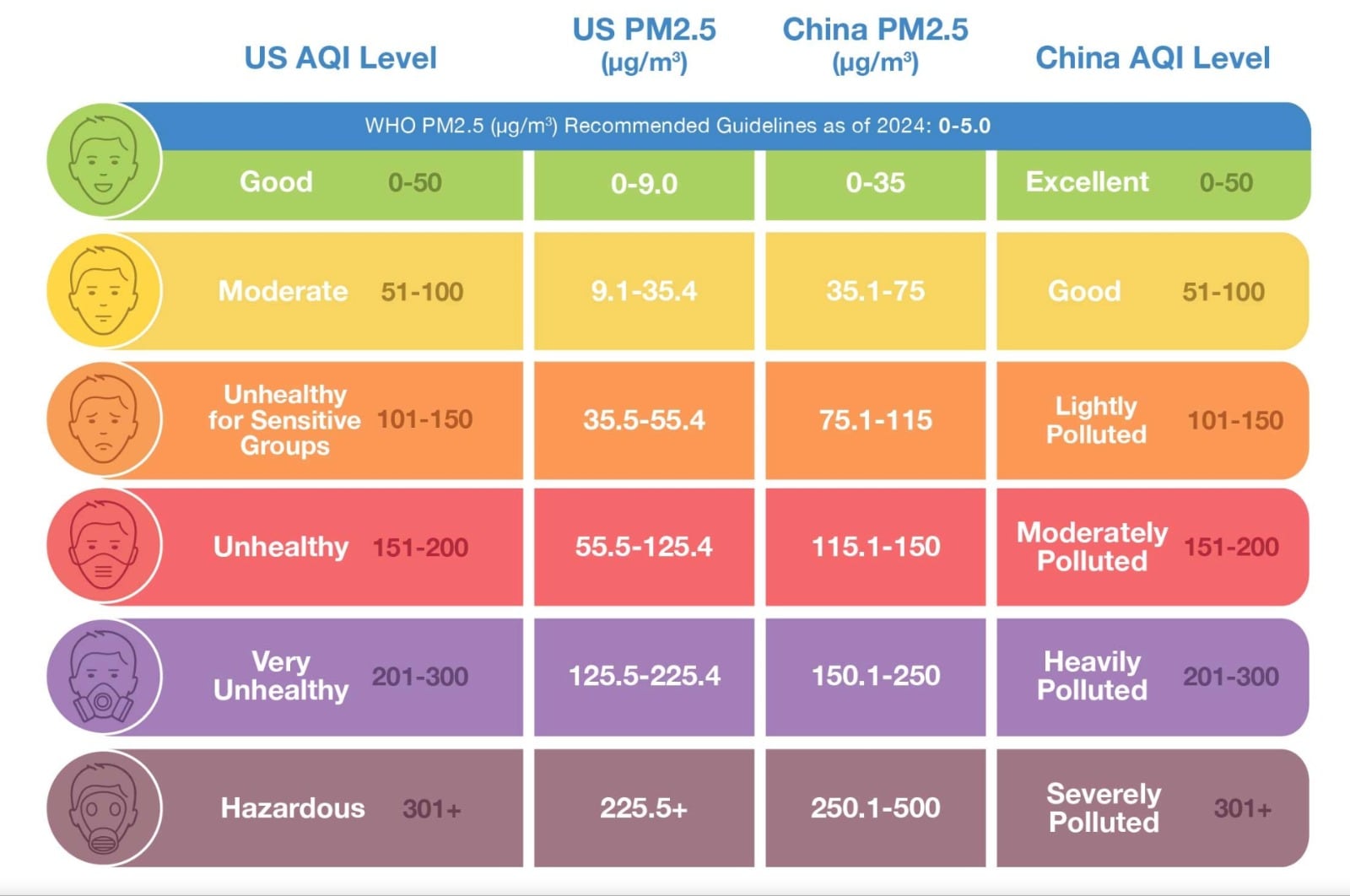
"When identifying AQI of a city or a station, both CPCB and IQAir, look at the dominating pollutant. For Northern India, it is generally particulate matter, and in winters, you would find PM 2.5, ultra-fine particulate matter to be the key pollutant," said George.
Data Sources
CPCB sources data from government-owned air quality monitoring stations including those operated by CPCB, DPCC, India Meteorological Department (IMD) and Indian Institute of Tropical Meteorology (IITM).
"CPCB relies on reference-grade monitors which provide calibrated data," said Geoge.
IQAir gets data from all the government sources and other sensor-based analysers installed by varied companies and even individuals.
"The US Embassy, for instance, has an air quality monitoring station installed. Similarly, other embassies and individuals have such analysers installed. IQAir takes average of all of these stations," said Sunil Dahiya, Founder and Lead Analyst at Envirocatalysts.
Also Read: 'Supreme Court Chose Right To Burn Crackers Over Right To Live': Amitabh Kant
Calculation
Both CPCB and IQAir follow different methods of calculating AQI. NDTV tried the two calculators and found vast difference in the AQI reading.
Let us assume PM2.5 concentration in an area is 1,100 micrograms per cubic meter. As per the IQAir calculator, AQI of that area will be 2,043. But, CPCB calculator will reflect AQI at 1,054. However, CPCB's final AQI will be under 500.
Whom To Trust?
George suggests looking at labels like "severe" or "hazardous" or the concentration of pollutant and accordingly taking health measures.
For instance, at 11:30 am today, IQAir recorded air quality near Mandir Marg in Delhi at 489 with PM2.5 being the major pollutant. PM2.5 concentration was recorded at 320 micrograms per cubic meter.

At 11 am, CPCB recorded PM2.5 concentration at 335 micrograms per cubic meter.
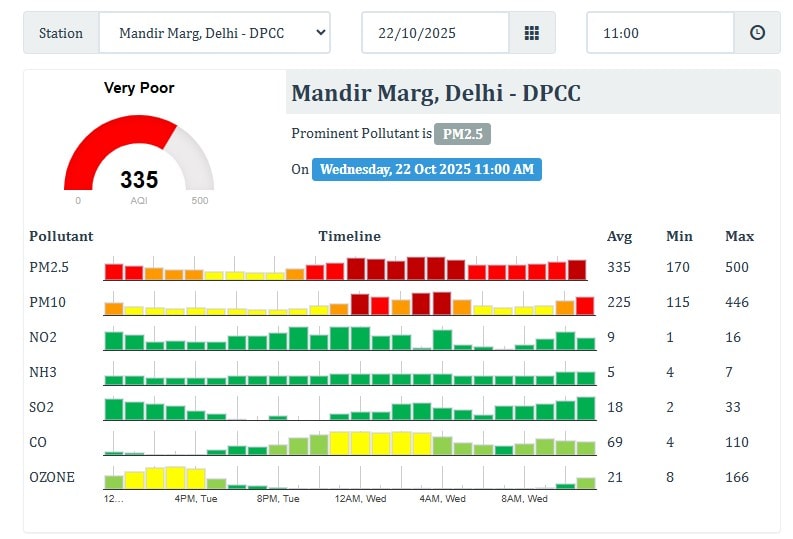
Therefore, look at concentrations or simply the label "very poor" or "severe".
IQAir or CPCB, the bottom line is that Delhi's air is polluted.
also read
Latest Stories
- Written by Jigyasa Kakwani , Edited by Shubham Bhatnagar | Thursday December 11, 2025
Tandoori dishes are a staple of Delhi's dining and evening snack culture, especially across neighbourhood markets and street-side stalls.
- Press Trust of India | Wednesday December 10, 2025 , New Delhi
Amid high pollution levels in the capital, the Delhi Pollution Control Committee (DPCC) has issued directions mandating a strict ban on the use of coal and firewood in tandoors across all hotels, restaurants and open eateries in the city.
- Press Trust of India | Monday December 08, 2025 , New Delhi
Delhi's air quality remained locked in the 'very poor' category on Monday, with the air quality index (AQI) staying above 300, while forecasts suggest that pollution levels are likely to deteriorate further.
- Reported by Ashwine Kumar Singh | Monday December 08, 2025 , New Delhi
Delhi Chief Minister Rekha Gupta's remarks about the government using mist sprayers to contain pollution at hotspots has drawn a stinging response from her predecessor Arvind Kejriwal.
- Written by Rupashi Chhabra | Monday December 08, 2025
Maintaining lung health is essential for longevity. Here are five simple steps to perform an anti-pollution lung detox for long-term well-being.
................................ Advertisement ................................
Latest Videos
Opinion
Blog | Well Done, Delhi. You've Turned Lung Sacrifice Into A Badge Of HonourSaikat Kumar Bose
Monday November 10, 2025Till some years back, Delhiites would ask angry questions to those in power about the capitals annual tryst with toxic air. This has changed. Those in the driving seat dont see the need to answer now.
Opinion | Why Indians Have Just Given Up On Air Pollution CrisisTanushree Ganguly
Friday December 20, 2024While some may argue that people in Delhi are now more aware of air pollution than they were a decade back, my rebuttal would be that awareness does not mean that people are concerned.
Opinion | You Must Outrage Over Filthy Air More Than Once A YearJyoti Pande Lavakare
Tuesday December 10, 2024Delhi welcomed us with monsoon rains and mangos. We were home. Fast forward a couple of years, in the winter of 2012, I found myself in denial about something other parents, mostly expats, were calling toxic air.
Opinion | Delhi's Air Pollution Situation Is Like A Bad MarriageNishtha Gautam
Friday November 22, 2024On a good day, such as today, the AQI reading in Delhi is 407. We are jubilant at the sickly sunshine trickling through the slightly dissipated smog. At least its not 1600.
दिवाली... पराली... सियासी जुगाली!Ashwini kumar
Monday November 18, 2024दिल्ली-एनसीआर में प्रदूषण का समाधान तो आज तक मिला नहीं. हर साल चिंतित होकर हम-आप सांसों की तकलीफ के साथ-साथ दिल और ब्लड प्रेशर के मरीज भी क्यों बनें?



